
How to Choose Pad Mounted Transformer?
Table of Contents Selecting the right pad-mounted transformer requires careful consideration of several critical
ELECTRIC, WITH AN EDGE
The configuration of reactive power compensation for solar bess power plant is essential for its stable operation. The reactive power losses in the pad mounted transformer, collector line, step-up transformer and transmission line of the PV and energy storage devices are calculated by taking into account the system composition of the solar bess power plant.
Taking the actual solar bess power plant project as an example, the reactive power compensation capacity is calculated by combining the actual configuration of the project and other conditions, and the problems that need special attention in the capacity calculation of the reactive power compensation device of the solar bess power plant booster station are proposed, and the specific requirements for the reactive power compensation device are also proposed.
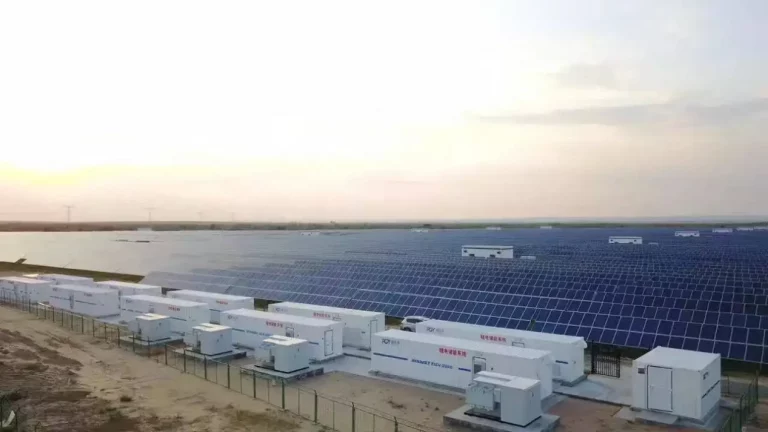
It is the current trend of all countries to actively respond to climate change and strive to build a clean, low-carbon, safe and efficient energy system. Countries take the development of new energy storage as an important measure to enhance the regulation capacity of power system and support the construction of new power system.
At present, in order to enhance the capacity of renewable energy consumption, all provinces and cities have proposed to equip new market-based grid-connected renewable energy projects with certain capacity of energy storage devices.
The construction of bess power plant project is not only a concrete way to achieve the goal of “double carbon”, but also can improve the consumption capacity of PV.
PV power output is unstable with the change of light resources, and the provision of energy storage devices also has a certain influence on PV power output.
The grid-connected operation of solar bess power plant has a negative impact on the power quality and safe and stable operation of the grid. Among them, the reactive power compensation of solar bess power plant is crucial to the stable operation of the power plant.
During the normal operation of the solar bess power plant, the generated power is connected to the grid through the pad mounted transformer, collector line, step-up main transformer and output line of the solar bess power plant, so there are reactive power losses in the transformer and line at all levels of the solar bess power plant, and there are reactive power losses in the pad mounted transformer and collector line of the energy storage device.
The reactive power compensation device should be able to compensate the reactive power loss of related equipment, realize dynamic continuous regulation, have the ability to control and network voltage, and the regulation speed should be able to meet the needs of grid voltage regulation. Therefore, solar bess power plant needs to install centralized reactive power compensation device for compensation.
In this paper, according to the reactive power loss composition of solar bess power plant, reactive power compensation calculation is carried out, and its reactive power loss is analyzed and calculated with the actual engineering situation, and the conclusion of reactive power compensation capacity configuration is drawn.
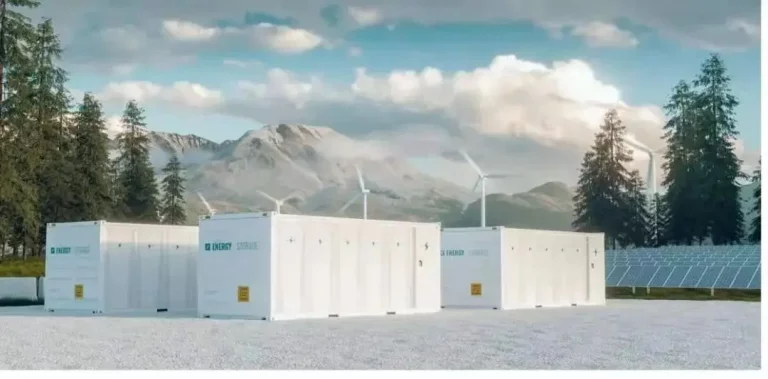
The solar bess power plant system is mainly composed of photovoltaic power generation and energy storage.
The solar bess power plant system is mainly composed of photovoltaic module string, convergence equipment, inverter equipment and voltage boosting equipment, etc.
The energy storage part is mainly composed of energy storage battery system, pad mounted transformer, power collection line, electrical secondary equipment and auxiliary equipment.
The photovoltaic power generation part consists of several photovoltaic modules and centralized inverters connected in series and parallel to form several photovoltaic power generation units, and each photovoltaic power generation unit is equipped with one 35kV pad mounted transformer boosted to 35kV, which is connected to the 35kV side of the PV field booster station through several sets of collector lines.
The energy storage part consists of several energy storage batteries and energy storage converters to form energy storage nodes, and every four energy storage nodes form one energy storage unit, and each energy storage unit is equipped with one pad mounted transformer to step up to 35kV, which is connected to the 35kV side of the PV field booster station through several sets of collector lines. The low voltage side of the main transformer of the PV field booster station is 35kV.
The boosting method is determined according to the installed capacity and grid-connected voltage level of the bess power plant project.
If the grid-connected voltage level is 35kV, only the pad mounted transformer is needed to step up the voltage in the field and then connect to the grid.
If the grid-connected voltage level is 110k V or 220kV, the pad mounted transformer and the main transformer need to be boosted separately. The inverter outlet voltage is boosted to 35kV by the pad mounted transformer and then connected to the main transformer via multiple 35k V collector lines to be boosted to 110k V/220k V, and then then connects to the grid by the feeder line.
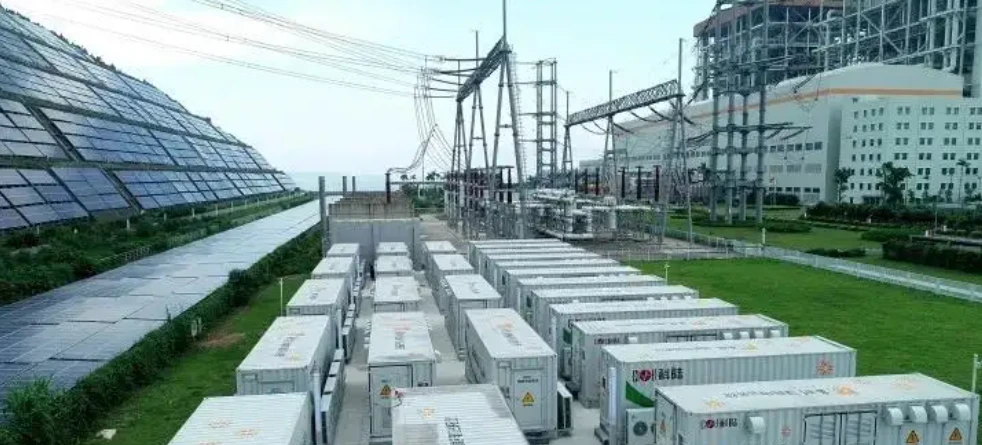
The reactive power loss of solar bess power plant mainly comes from the reactive power loss of PV pad mounted transformer, PV collector line, main transformer, transmission line, energy storage pad mounted transformer, energy storage collector line and so on. Collector lines mostly use cables, the reactance of the cable is much larger than the resistance, and the charging power is much larger than the reactive power loss, so only the charging power is considered for the collector lines.
For the reactive power compensation capacity of solar bess power plant, after deducting the charging power, the capacitive reactive power loss and inductive reactive power loss should be considered comprehensively.
The electrical equipment involved in reactive power loss in solar bess power plant are as follows: a) PV pad mounted transformer.
The pad mounted transformer will step up the voltage of PV from 800V to 35kV, each PV array is equipped with one pad mounted transformer, commonly used capacity of 3150kV-A, 4000kV-A, 5000kV-A, according to the comprehensive economic determination of PV field layout. b) PV collector line.
The power generated by the photovoltaic power station is stepped up by the pad mounted transformer and sent to the low voltage 35kV side of the main transformer of the booster station through the 35kV collector line.
The number of circuits and length of PV collector lines vary depending on the installed capacity and site topography. c) Energy storage pad mounted transformer.
The energy storage pad mounted transformer steps up the voltage of the storage node from 0.36V to 35kV. Each storage unit is equipped with one pad-mounted transformer, and the capacity depends on the storage capacity and the pooling scheme, mostly 2520kV-A. d) Energy storage collector line. Send the energy storage capacity through the pad mounted transformer to the 35kV bus of the booster station. e) Boost transformer.
The main transformer capacity is generally determined according to the installed capacity of the bess power plant project. f) Sending line. The power generated after boosting is connected to the grid through the transmission line.
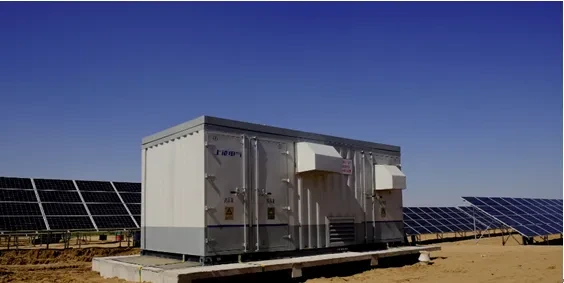
Take a bess power plant photovoltaic power plant for pre-work as an example to study and analyze. The total installed capacity of the project is 250MW, and 10% of the installed capacity is equipped with energy storage.
According to the installed capacity, the current situation of the power grid and planning, it is proposed to send out by one 220kV line. Relevant main equipment and parameters are as follows.
The main transformer adopts a single double-winding double branch on-load regulator transformer with balanced winding of capacity 250MV-A. The ratio of the on-load regulator transformer is 220±8×1.25%/37+10, and the impedance voltage percentage Ud=18%.
PV pad mounted transformer adopts 79 units of 3.15MV-A double-winding pad-mounted transformer with a ratio of 37±2×2.5%/0.8 and impedance voltage percentage Ud=7%; PV collector line mostly adopts model ZC-YJLHY23-26/35kV-3×500 cable, totaling 79km.
The energy storage pad mounted transformer adopts 10 double-winding pad-mounted transformers of 2.5MV-A capacity, with a ratio of 37±2×2.5/0.36; the impedance voltage percentage Ud=6%.
The energy storage collector line mostly uses the cable of model ZC-YJLHY23-26/35k V3-×120mm2, totaling 8km. 220k V transmission line is 2×JL/G1A-300, 19km.
The reactive power compensation required for each bus section is calculated according to the PV and energy storage pad-mounted transformer, the loss of the collector line and the apportioned loss of the main transformer, and the apportioned loss of the line for each bus section.
The main electrical wiring of the project booster station is shown in Figure 1.

The reactive power loss is calculated according to the relevant calculation formula.

In Eq. (1)-Eq. (2), XT is the famous value of transformer reactance, Ω; Ue is the rated voltage of the transformer, kV.
Se is the rated capacity of the transformer, MV-A.
Uk is the percentage of impedance voltage.
ΔQT is the reactive power loss of the transformer, Mvar.
n is the number of transformers operating in parallel.
P is the passed active power, MW.
Q is the reactive power passed, Mvar.
U is the transformer terminal voltage, kV.
I0 is the percentage of no-load current of the transformer.
In this example, single PV pad mounted transformer P=3.125MW, Se=3.150MV-A, n=1, Uk=7%, the reactive power loss of single PV pad mounted transformer is calculated as 0.217Mvar.
Single energy storage pad mounted transformerP=2.5MW, Se=2.5MV-A, n=1, Uk=6%. Substituting into equation (2), the reactive power loss of a single energy storage pad mounted transformer is calculated to be 0.15Mvar.
Each 35kV bus section of the booster station collects 40 PV pad-mounted transformers and 5 energy storage pad-mounted transformers, and the total reactive power loss of each 35kV bus section is 9.43Mvar.

The power from the PV power generation unit is inverted and boosted by inverters and pad mounted transformers and then sent to the booster station through the collector line. The collector line of PV power station generally uses cable, and the reactance of cable is much smaller than the resistance, so only the charging power of cable is considered.
35k V Ⅰ mother pooled photovoltaic collector line about 40km, storage collector line about 4km.
35kV-Ⅱ female convergence of photovoltaic collector line is about 41km, and the energy storage collector line is about 3km.
For the 3×500mm2 cross-section cable used in the PV collector line, the qc value is 0.098Mvar/km.
For the 3×120mm2 cross-section cable used for the energy storage collector line, the qc is taken as 0.060Mvar/km.
Substituting the above variables into equation (3), the charging power of the 35kV-Ⅰ female collector line is calculated to be 4.16Mvar, and the charging power of the 35kV-Ⅱ female collector line is 4.20Mvar.
Considering the role of solar bess power plant energy storage device for peak regulation, it is considered that the storage device is charging state when PV is generating a lot of power.
When the evening peak PV output is 0MW, the energy storage device is the power generation state, so the maximum transmission capacity that may occur on the transmission line is when the PV is fully developed.
For the installed PV capacity of 250MW, taking into account the power factor of 1, Q take 0Mvar, P = 250MW, 220kV wire type 2 × JL/G1A-300, its unit length reactance of 0.309Ω/km, line length 19km, can be derived from X = 5.87Ω, U ‘= 220kV.
Substituting the above parameters into equation (8), the reactive power loss is 7.58 Mvar when the line charging power is not considered.
Considering the existence of charging power of the overhead line, its charging power per unit length qc = 0.19Mvar/km, L = 19km; substituted into the formula (3), resulting in charging power of 3.61Mvar.
After deducting the charging power from the reactive power loss of the transmission line, the reactive power loss of the line is 3.97Mvar and the charging power is 3.61Mvar when delivering 250MW capacity, and this needs to be converted to each section of 35kV busbar.
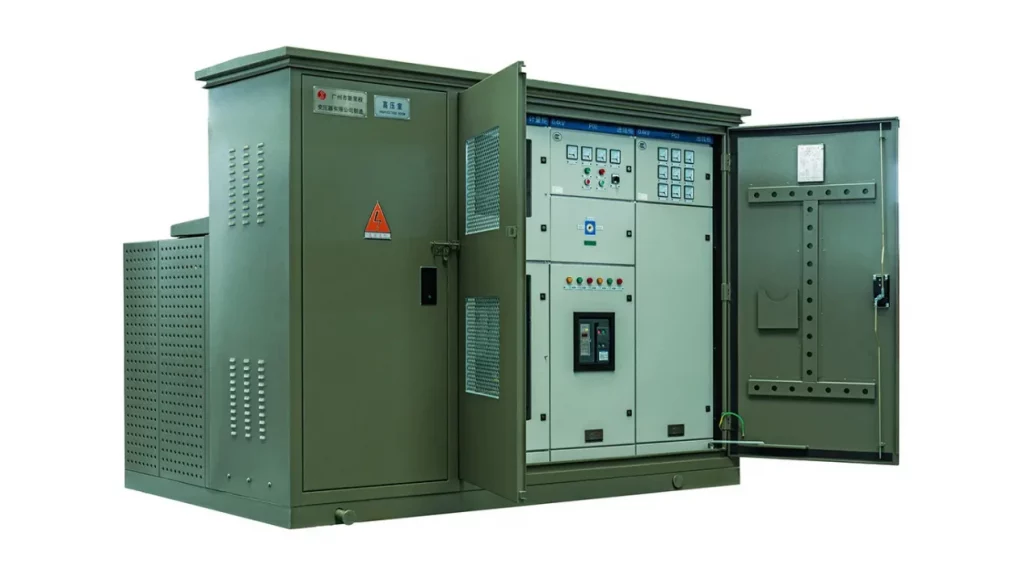
According to section 6.2.3 in the literature [2], for PV power plants connected to the grid through 110 (66) kV and above voltage levels, the reactive power capacity configuration should meet the following requirements.
a) capacitive reactive power capacity can compensate for the sum of the inductive reactive power of the station’s converging lines, main transformer substation voltage and half of the inductive reactive power of the PV power station’s sending lines when the PV power station is fully developed.
b) Inductive reactive power compensation can compensate the sum of the PV power station’s own capacity charging power and half of the charging power of the PV power station’s sending line.
For the apportionment of the charging power of the sending line, due to the charging power of the sending line and the transmitted power reactive power, according to the specification half of the charging power of the sending line should not be apportioned to each section of the 35kV bus after taking into account the charging power.
Therefore, the charging power of each section of 35kV bus should be considered separately the charging power of its own collection line and the sum of half of the charging power of the sending line.
After the above calculation, when the photovoltaic power plant is fully developed, considering the pad-mounted transformer of photovoltaic and energy storage device, the inductive loss of the collector line, main transformer substation and half of the inductive power loss of the sending line and converted to each 35kV bus, the total reactive power loss of the 35k VI bus is 29.75Mvar, and the total reactive power loss of 35kV-II bus is 29.71Mvar.
When the output power of PV power plant is 0MW, considering the charging power of collector line and half charging power of transmitting line, the total charging power of 35kV-I bus is 5.96Mvar, and the total charging power of 35k V II bus is 6.00Mvar. –
Therefore, the 35kVI bus and II bus on the low-voltage side of the main transformer substation need to be equipped with dynamic and continuously adjustable reactive power compensation devices with an effective compensation capacity of not less than 30Mvar (capacitive) to 6Mvar (inductive). The dynamic reactive power response time of the PV power station should be no longer than 30ms [3].
The calculation of the reactive power compensation capacity of the solar bess power plant was carried out in conjunction with the actual project, which is of guidance for the configuration of the reactive power compensation capacity of similar projects.
In particular, the reactive power compensation capacity of solar bess power plant should be considered to be able to compensate the reactive power loss of each electrical equipment and the reactive power compensation device should be able to achieve dynamic continuous regulation to control and network voltage, and the regulation speed should be able to meet the needs of grid voltage regulation, so it is appropriate to equip dynamic reactive power compensation device.
For solar bess power plant’s reactive power loss calculation of the delivery line, due to the peaking effect of energy storage, when the PV is fully developed, the storage power plant is in charging or standby state, the maximum transmission power that may occur on the delivery line is the PV full development capacity.
Download Resource

Table of Contents Selecting the right pad-mounted transformer requires careful consideration of several critical

The primary function of the pad mounted transformer is to serve as a critical distribution

A pad mounted transformer operates through electromagnetic induction, serving as a crucial distribution component that